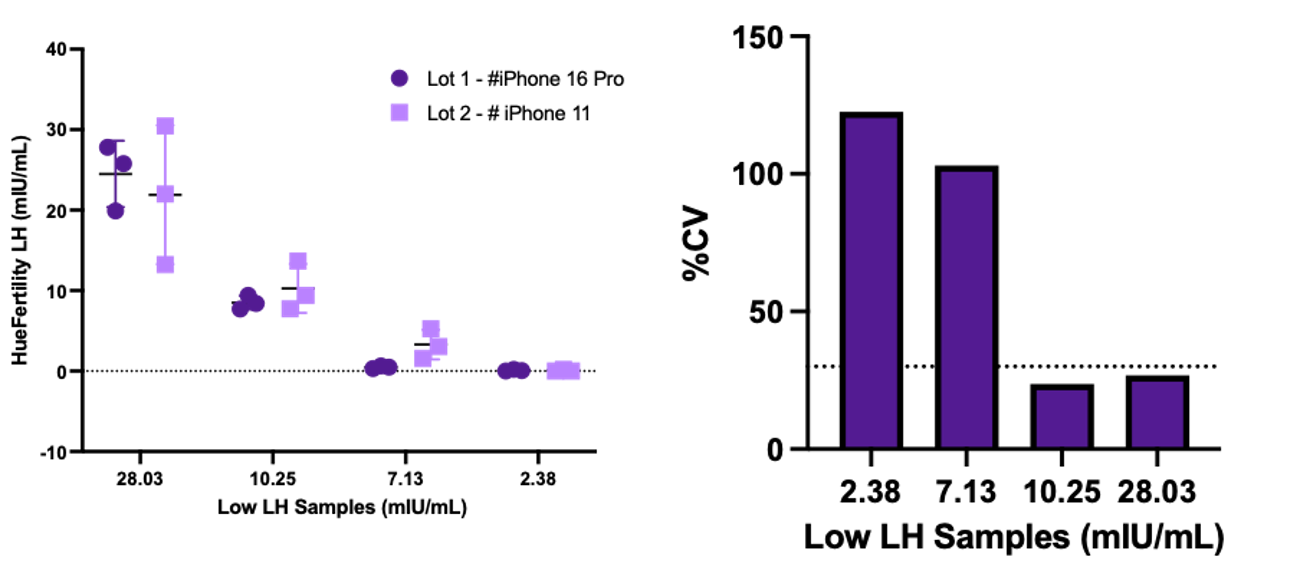Repeatability (%CV ~21%)
If you were to test the same hormone sample several times, the results would usually land within about one-fifth of each other. In other words, the system gives fairly consistent answers when measuring the same thing more than once.Accuracy + consistency combined (%TE ~26%)
When you consider both how close the predictions are to the true lab values and how repeatable they are, the system’s “all-in” error is about one quarter of the actual value. That means if the real hormone level is 100 units, the system will generally give you something between about 74 and 126.Straight accuracy (% Error ~20%)
On average, each prediction is off from the lab value by about 20%. So if the true level is 50, the system is usually somewhere between 40 and 60. That’s pretty good for a rapid, reader-free system.Trend matching (R² = 0.82)
When you plot the system’s predictions against the lab values, the curve follows very closely. An R² of 0.82 means the overall “shape” of the results is highly aligned with the real biology, even if individual points sometimes vary.Sensitivity (LoB / LoD / LoQ = 0.74 mIU/mL / 8.51 mIU/mL / 10.25 mIU/mL)
The system can reliably pick up a signal above background starting at 0.74 units, and can start reporting trustworthy, fully quantitative values at 10.25 units. That means very low hormone levels might be detected but not precisely quantified, while anything above 10.25 can be tracked with confidence.
The Numbers Behind HueFertility Ovulation
6. Precision
HueFertility provides consistent, repeatable results across the full range of LH levels. The system is especially strong at the hormone levels that matter most for ovulation tracking, delivering trustworthy, quantitative values above 10.25 mIU/mL. Even at very low levels, the system can still detect changes, helping you see the earliest signs of your cycle shift.
6. Comparison
To check how well HueFertility measures LH, we created a series of samples with known hormone levels using the international gold-standard reference material. We then tested these samples with five methods: a laboratory ELISA test, HueFertility Ovulation, two at-home kits that requires extra hardware, and one at-home kit that uses smartphone imaging.
The results show that HueFertility’s readings align very closely with the gold-standard ELISA lab method, demonstrating exceptional accuracy across all concentrations. In contrast, competitor kits consistently underreported hormone levels, often falling well below the true values. This means HueFertility delivers lab-grade precision you can trust — without the lab, hardware, or added cost.


